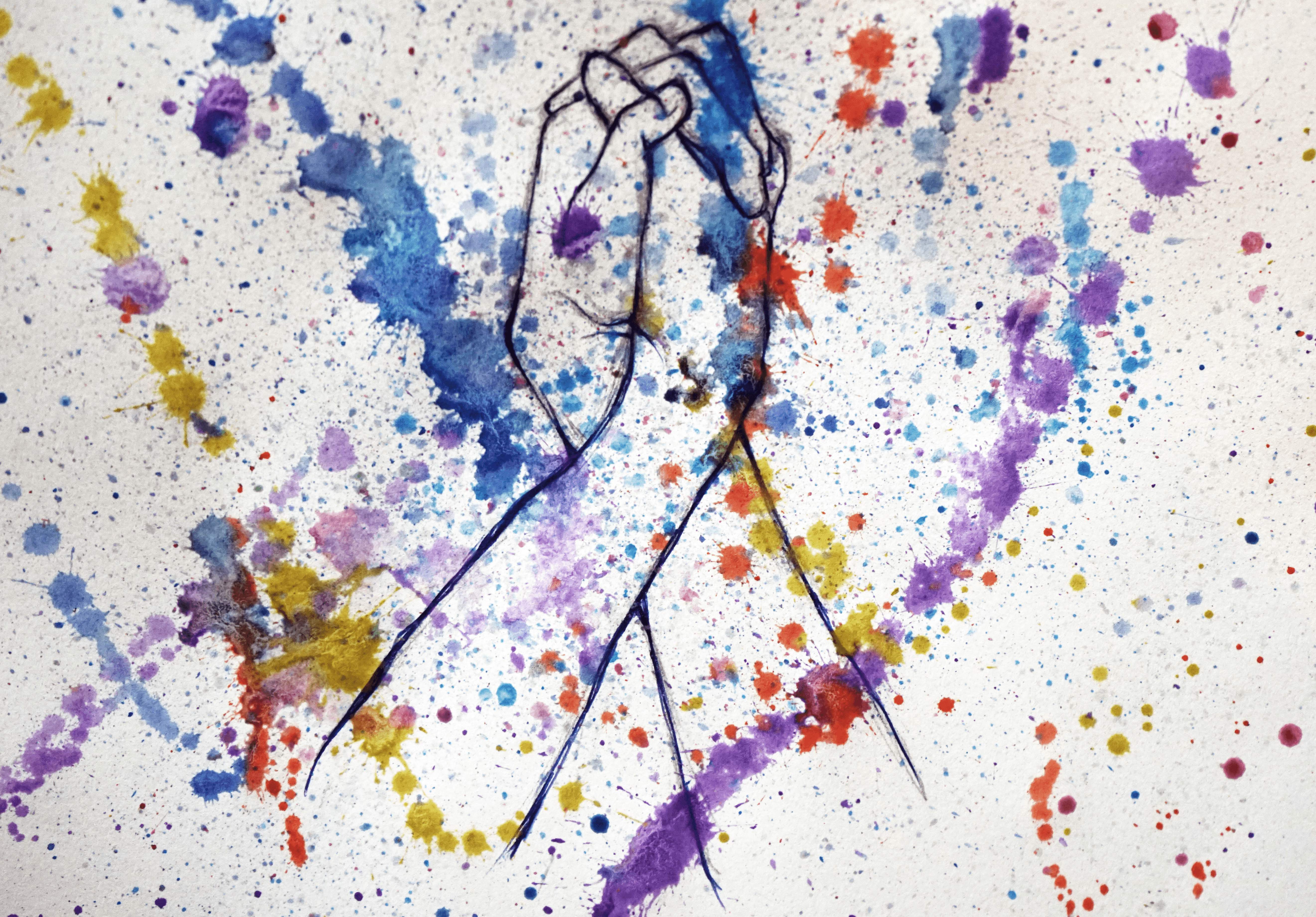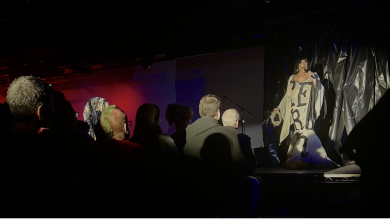UCLA Life for Female Bruins of Color

Illustration by Noopur Goel.
For most students of color, the question of whether to attend a “Predominantly White Institution” (PWI), a Historically Black College or University (HBCU), or a more ethnically diverse school is a life-changing decision. As a biracial, Hispanic teen, I was faced with this very decision in the fall of my senior year of high school. In a university setting, people of color typically experience double consciousness and a biting sense of self-awareness. We students of color will inevitably struggle to navigate our racial or ethnic identities in any given situation, because we are classified as “other” in the eyes of American society.
Stereotype threat, a term coined by psychologist Claude Steele, is a phenomenon in which the perceived threat of being viewed through the lens of a negative stereotype results in behavior that confirms that particular stereotype. Although stereotype threat has the power to affect any individual in a given situation, Steele’s findings demonstrated that African Americans and women are most susceptible to stereotype threat in higher-education settings. Within the context of my own life at UCLA, I have found that race and gender are two intersecting factors which define my social and academic experiences.
I spoke with three UCLA students who self-identify as women of color about their academic and social experiences at UCLA. From these interviews, I gained a better understanding of intersectional oppression and stereotype threat within a PWI setting.
During the Freshmen Summer Program, first-year Business Economics major Neemat Abdusemed was confronted by the question of her ethnic background in regards to her racial identity. “I don’t know if I’m Black because, at the same time, I have my Ethiopian background and, the way the community is, there’s a difference, you know?” Abdusemed questioned this particular label and whether she could readily identify with the term “Black,” which is often used to denote African-Americans but not necessarily other people of African descent. Similarly, as a black (Afro-Cuban) but not African-American woman, I have been hesitant to identify with and adopt the label.
Other students of color participating in FSP, however, were quick to dispel Abdusemed’s doubts; the solidarity among most black UCLA students helped Abdusemed to understand and identify with the racial categorization.“That’s when I realized that [the term black] is all-inclusive but there’s still a difference [between black and Ethiopian].”
DC native and History major Anthonya James, who is a black, African-American first-year, offered a different perspective in regards to racial identity. James spoke of the culture shock that she experienced upon first arriving on the UCLA campus. Having lived in a predominantly black neighborhood, attended predominantly black schools, and grown up among only black family members, James struggled to feel the same sense of “black pride” which her black-centric childhood had fostered. “I was taught that black is beautiful,” she said to me.
For the first time in her life, James questioned the intersection of her race and gender identities in the context of her academic achievement and mental health. James described the instrumental role of Sister to Sister, a class for black freshman and first year transfer women. In this class, students discuss the experiences of black women who must choose which facet of their identity to prioritize. Confronted by the question of which is more important, their blackness or their womanhood, black women must navigate our society’s racism and sexism in a very unique way. Prior to this class, James lacked the words to articulate her complex feelings about her identity: “As a black woman, it’s like two punches in the stomach…you’re always at a disadvantage,” she explained.
The experience of feeling discredited or devalued as a college student due to race and gender is not uncommon among women of color. When asked if she felt that her ethnic background and gender identity had influenced UCLA’s treatment of her, Abdusemed expressed that the school’s White and Asian majorities “don’t care to see [Black people] as different,” relegating her to the same category as “any other black woman” and subjecting her to similar treatment. “I don’t think a lot of people outside of the black community really care to know the difference of “black,” so I feel like I’m treated the same way as any black woman would have been treated.”
“In the classrooms, the first challenge I have [is] identifying with people around me…literally, I’m the only black girl that I see. And there’s no black males,” said Abdusemed. “I don’t identify with anyone so I already feel like I’m alone. That gives me more motivation but it still pulls me back… I don’t belong here, I don’t fit here, you know what I’m saying?” This daily internal battle archetypically embodies the black and Latinx woman undergraduate experience. Many of us, as Abdusemed articulated, feel that this lack of representation in classroom environments simultaneously motivates and hinders our academic success.
I also spoke with a first year Biology student who wishes to remain anonymous; she is of mixed racial ancestry (white, native Hawaiian, and Chinese) but feels that, although her intersecting identities have affected her life at UCLA, the stereotypes that surround her ethnic background are not as damaging as those concerning her gender. This is mostly due to her mixed racial background, which often leads people to perceive her as ethnically ambiguous: “I don’t think a lot of people necessarily know what I am. So, that’s kind of a little identity crisis, like I don’t know what I want to identify with,” said the student. “I strongly identify with my Hawaiian ethnicity and culture and, kind of, my Chinese [heritage].”
This student has also noticed the gender disparity in the male-dominated science classes she has taken thus far, particularly the lack of women of color across the Biology major. Although the opportunity to “represent a minority” in STEM motives her to succeed academically, this student does not consciously think of her multifaceted ‘minority’ status in science classes on an every-day basis. Rather, this student’s cultural heritage has had a greater effect on her social life. As a member of a sorority, she has found it difficult to connect with her sisters over a lack of commonalities that arise from growing up in such vastly different environments.
Unlike the other women with whom I spoke, this is a matter of ethnic and cultural differences rather than racial identity politics. Additionally, this student feels that, because Greek Life has a tainted reputation in her home state and is a predominantly white system, she is discouraged from advertising her sorority status. “Because I am Hawaiian, or a minority, I don’t normally wear my letters.” However, this is not for a lack of camaraderie and love among her sorority sisters.
It is unclear how exactly UCLA, and other PWI’s across the country, should comprehensively address the lack of ethnic and gender representation found in the average lecture hall. However, I am confident that diversity expansion is a critical first step towards achieving a more inclusive, wholesome learning environment. All three women of color with whom I spoke, in addition to myself, believe that they are unwelcome or looked down upon by their peers on any given day. This hostile environment, which is supported by structures of implicit racism and sexism, produces very real, very deep, and very painful emotional responses among students. Oftentimes, as women of color, the added pressures surrounding our undergraduate experiences surmount our abilities to persist as focused, successful college students.
Still, there is hope: by taking classes that encourage controversial, counter-discourses about race, gender, social class, and sexual orientation, we can achieve a sense of community and inclusion that will prompt better academic achievement and improve our mental health. Women of color, and minorities in general, tend to gravitate towards others who are like them. By finding communities within the greater UCLA student body, we are able to hold onto the parts of our identity which are the most important and defining, but which make us the most vulnerable to outside attacks.




